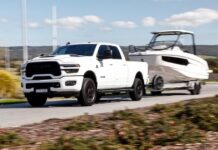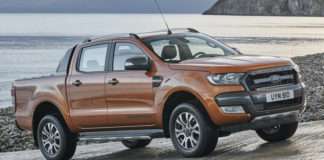China’s two leading companies in the autonomous driving sector, WeRide and Pony.ai, both launched on the Hong Kong Stock Exchange today. However, their initial trading performance was disappointing, with both companies seeing their share prices fall more than 10% shortly after opening. This dual listing strategy, which follows earlier attempts on the NASDAQ in 2024, aims to broaden access to funding, attract investors from the Asia-Pacific region, and increase stock liquidity—a significant step for the industry as it strives for commercial viability. Combined, WeRide and Pony.ai have raised roughly $1.12 billion USD in funding.
Initial Trading and Financial Performance
WeRide, which began trading this morning, raised 291 million USD in its IPO. Its shares were initially priced at 3.49 USD, and the company issued 88.3 million shares. Within the first four minutes of trading, WeRide’s stock price plummeted by 13.65% to 3.01 USD, giving it a market capitalization of $3.1 billion USD.
Pony.ai, listed concurrently, secured 830 million USD from its IPO. The initial offering price was set at $17.88 per share, and the company issued 48.3 million shares. However, Pony.ai shares quickly fell 12.23% to $15.69, resulting in a market capitalization of $6.7 billion USD.
Revenue and Losses: A Picture of Growth and Challenges
Despite the initial stock market weakness, both companies have shown signs of progress. WeRide’s revenue decreased from $73.92 million USD in 2022 to $50.54 million USD in 2024, but the second quarter of 2025 demonstrated a strong recovery, with total revenue surging 60.8% year-on-year to $17.81 million USD. This growth was primarily driven by an 836.7% increase in its Robotaxi business. For the first half of 2025, service revenue reached $18.2 million USD, while product sales revenue skyrocketed by 228.57% to $9.66 million USD.
Pony.ai’s revenue grew from $75.03 million USD in 2024 and reached $35.43 million USD by the second quarter of 2025.
However, both companies remain unprofitable. WeRide has accumulated net losses of $812 million USD since 2022, though its net loss narrowed to $111 million USD in the first half of 2025. Gross profit for the first half of 2025 increased 10.91% to $8.54 million USD. Pony.ai’s net losses expanded from $148 million USD in 2023 to $275 million USD in 2024.
Investing in the Future: Research and Development
Both companies have made substantial investments in research and development. WeRide’s R&D expenditure totaled $498 million USD, with $90.2 million USD spent in the first half of 2025 alone. Pony.ai’s R&D spending amounted to $613 million USD over the past four years, reaching $240 million USD in 2024.
Technological Approaches and Commercialisation
WeRide employs a “software-first” autonomous driving platform called “WeRide One,” designed to be versatile across various vehicle types and applications. Its core products include Robotaxi, Robobus, Robovan, Robosweeper, and the advanced intelligent driving solution, WePilot. The company has secured autonomous driving licenses in five countries and is conducting testing and commercial operations in ten. Its vehicles have accumulated approximately 55 million kilometres on public roads, maintaining over 2,200 consecutive days of public operation.
Pony.ai focuses on a full-stack “Virtual Driver” technology with a “hardware-driven” strategy. Its main products are Robotaxi and Robotruck. Pony.ai has obtained 24 Robotaxi permits in tier-one cities and boasts a fleet of 726 vehicles, with a cumulative operating mileage of 93 million kilometres.
Recent developments include Pony.ai’s seventh-generation Robotaxi, which recently began official operation, equipped with 34 sensors to handle complex road conditions and powered by a world-first L4 Robotaxi automotive-grade domain controller. WeRide is also making progress in assisted driving, with its one-stage end-to-end ADAS solution now in production, set to be included in annual facelift models of Chery Exeed Exlantix ES and ET.
Conclusion
The rocky start to trading for WeRide and Pony.ai highlights the ongoing challenges in the autonomous driving sector. While both companies demonstrate potential through revenue growth and technological advancements, sustained profitability remains an elusive goal. The market’s initial reaction indicates a cautious approach to investing in this nascent industry. At 14:15 Beijing Time on November 6th, WeRide’s Hong Kong share price was down 13.65% from its initial listing price, while Pony.ai’s was down 13.38%—underscoring the complex path toward commercial viability in the autonomous vehicle market.






















